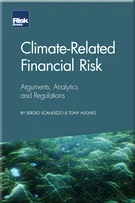Background to the Chinese Renminbi
Preface
Background to the Chinese Economy, Banking System and Capital Market
Background to the Chinese Renminbi
Onshore FX Markets and Instruments
Offshore FX Instruments and Market
Trade Settlement, Hedging, Investment and Trading
Future Developments
Detailed chronology of main events in renminbi internationalisation
References
2.1 INTRODUCTION
Sometimes, when discussing the renminbi exchange rate, people confuse the flexibility of the currency with its convertibility. These are two different concepts.
A flexible or floating exchange rate usually means it moves up and down freely and its level is set by market forces. Its opposite would be a fixed, or pegged, exchange rate. Between 100% floating and 100% fixed there exist many different kinds of managed floating exchange-rate arrangements. As of the end of 2011, the renminbi exchange rate against the US dollar was officially known as the “managed float”. Many researchers and journalists use terms such as “crawling peg”, “semi-fixed” and “basket peg” to describe it. The official description from SAFE on its website since 2005 has been “a managed floating exchange rate system based on the market supply and demand, adjusted with reference to a basket of currencies”. We will see later in this chapter that market supply and demand began to play an increasingly important but still very limited role in the renminbi’s price formation up to the end of 2011.
On the other hand, a convertible currency means that you can buy and sell the currency against
Copyright Infopro Digital Limited. All rights reserved.
As outlined in our terms and conditions, https://www.infopro-digital.com/terms-and-conditions/subscriptions/ (point 2.4), printing is limited to a single copy.
If you would like to purchase additional rights please email info@risk.net
Copyright Infopro Digital Limited. All rights reserved.
You may share this content using our article tools. As outlined in our terms and conditions, https://www.infopro-digital.com/terms-and-conditions/subscriptions/ (clause 2.4), an Authorised User may only make one copy of the materials for their own personal use. You must also comply with the restrictions in clause 2.5.
If you would like to purchase additional rights please email info@risk.net










